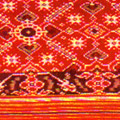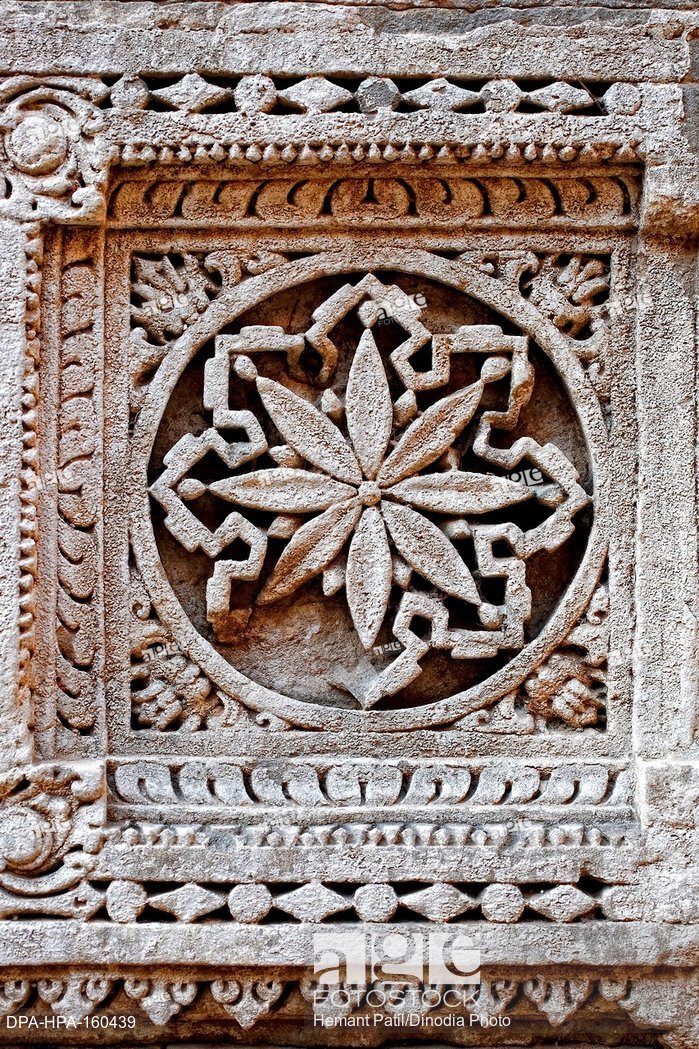The traditional patola is a double-ikat silk, with intricate five-colour designs resist dyed into both warp and weft threads before weaving. In the patola both warp and weft is resist dyed in a manner that, when woven, the elements of patterns on warp and weft mesh completely and perfectly. A slight ‘run-on’ in texture – a flame effect – is often there, though in a pure patola this ‘run-on’ should be almost imperceptible.

Earlier the patola was woven in Ahmedabad, Surat, Cambay and Patan in Gujarat; Jalna in Maharashtra; and Burhanpur in Madhya Pradesh. It was also a highly esteemed fabric in South East Asia – in Bali and the Malay Archipelago – where it was used in court, ceremonial, and ritual occasions. Now the traditional patola is made only in Patan by a few Salvi families, the traditional weavers of the patola.
The ‘distinctive, repetitive, often geometric designs [of the patola] fall into three types’:
- Purely geometric forms (e.g.: the navratana bhat or nine-jewel design)
- Floral & vegetal patterns (e.g.: the pan bhat or pan-leaf design/ chabbdi
Bhat or flower-basket design) - Designs depicting forms (nari or woman/ kunjar or elephant/ popat or
parrot)
The colours are of the earth, of stones.
The modern patola often has the designs are created in the weft threads only. This is less labour intensive and hence less expensive.
Gallery
YOUR VIEWS
PRACTITIONERS: INDIA
Access 70,000+ practitioners in 2500+ crafts across India.
BIBLIOGRAPHY
10,000+ listings on arts, crafts, design, heritage, culture etc.
GLOSSARY
Rich and often unfamiliar vocabulary of crafts and textiles.
SHOP at India InCH
Needs to be written.






